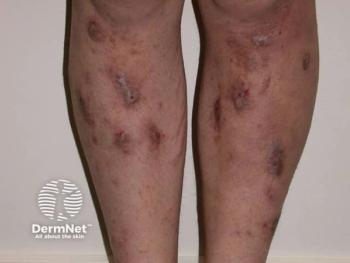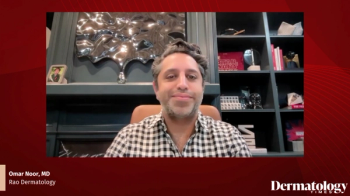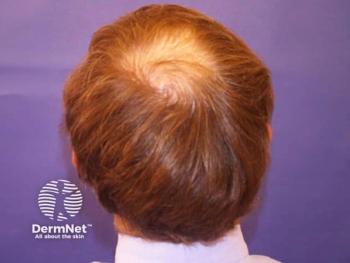
Sculptra tips include enforcing 'Rule of Fives,' combining with temporary fillers
National report - Poly-L-lactic acid filler Sculptra (Dermik) can offer some excellent long-term results in adding volume when patients have facial lipoatrophy, and Cherie Ditre, M.D., offers some key tips to further enhance successful use of the filler.
National report - Poly-L-lactic acid filler Sculptra (Dermik) can offer some excellent long-term results in adding volume when patients have facial lipoatrophy, and Cherie Ditre, M.D., offers some key tips to further enhance successful use of the filler.
Dr. Ditre is director of cosmetic dermatology and the Skin Enhancement Center at the University of Pennsylvania School of Medicine.
Key points
It's also important to remind patients that the volume seen immediately following the procedure will gradually subside within a few days. She offered a useful pearl, however, for addressing that initial period of potential disappointment and helping patients who want to use Sculptra but need more immediate results:
"If a patient requires an immediate fill, you can actually inject two types of fillers - Restylane (Q-Med) or one of the hyalurans, which can be used above the Sculptra injection, i.e., mid-dermis, and then you can go deeper with the Sculptra," Dr. Ditre tells Dermatology Times.
"Just as the temporary fillers wear off, the neocollagenesis from the Sculptra is building up, so you can achieve a balance," she says.
Sculptra can also be used in combination with Botox (Allergan), and while it can be injected every four to six weeks, Dr. Ditre suggests that doctors might want to wait before the second and third injections to assess the volume.
Patients should be counseled to avoid aspirin, nonsteroidal anti-inflammatory drugs, alcohol and vitamin E before the procedure and for 48 hours afterward to decrease bruising, and to use ice, also to prevent bruising.
Mode of action
The effect of Sculptra's progression is that spherical, birefractive poly-L-lactic acid particles, 2 to 50 microns in diameter, are surrounded by macrophages and lymphocytes at three months following injection.
At six months, the microspheres are porous, fissured and deformed, and surrounded by giant cells, and at nine months, the degradation of poly-L-lactic acid is completed by hydrolytic enzymes and macrophages.
There have been some reports of granulomas or papules resulting from poly-L-lactic acid, and Dr. Ditre notes a study showing the development of subcutaneous papules in 10 percent of a treated population using 3 ml sterile water dilutions mixed two to 12 hours before injecting. The papules were palpable but otherwise not notable, and the majority resolved without treatment within 12 to 24 months.
Patients with papules who were treated with 10 mg/ml ILS or 5-FU every two to six weeks saw resolution of the papules within three months.
Significantly, since 2002, the occurrence of papules dropped to just 1 percent when using 3 ml of sterile water mixed 36 to 48 hours before treatment and then adding 2 ml of 1 percent lidocaine immediately prior to the injections. (J Drugs Dermatol. 2004; 3(4): 385-389).
Reconstitution tips
Offering some additional reconstitution tips, Dr. Ditre notes that while manufacturer recommendations call for reconstitution with 3 cc to 5 cc of sterile water by slow addition, she and other dermatologists use 4 cc of sterile water overnight, followed by 2 cc of 1 percent or 2 percent lidocaine with or without 1 cc of 1 percent lidocaine with epinephrine immediately before the injection.
The latter method is particularly recommended for patients who bruise easily. It is important to refrain from using excessive lidocaine and certainly to avoid using epinephrine in those patients who have a cardiac history, those with a history of supraventricular tachycardias with dental surgeries, or others.
Reconstitution is recommended at least two hours before injection; however, the night before is preferable because this allows for more homogeneity in the solution and reduces clotting in the needle. The product should then be used within 72 hours, she says.
Get real
Finally, to have a successful outcome and a satisfied patient, Dr. Ditre recommends that dermatologists from the start get "in patients' faces" - since they will be doing so literally - about the realities of the treatment and the results patients can expect.
"I tell them I'm really going to get in their face, and I educate them on the A-B-Cs of the treatments," she says.
Newsletter
Like what you’re reading? Subscribe to Dermatology Times for weekly updates on therapies, innovations, and real-world practice tips.


















